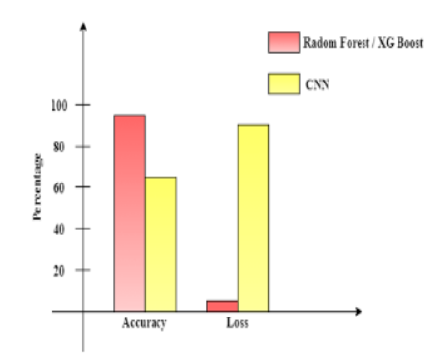


Indian Journal of Science and Technology
DOI: 10.17485/IJST/v16i41.1580
Year: 2023, Volume: 16, Issue: 41, Pages: 3617-3626
Original Article
B Meena Preethi1*, C Sunitha2, M Parameshvar3, B Dharshini3, S Gokul3
1Assistant Professor, Department of Software Systems and AIML, Sri Krishna Arts and Science College, Coimbatore, Tamil Nadu, India
2Head of Department, Department of Software Systems and AIML, Sri Krishna Arts and Science College, Coimbatore, Tamil Nadu, India
3Student, Department of Software Systems and AIML, Sri Krishna Arts and Science College, Coimbatore, Tamil Nadu, India
*Corresponding Author
Email: [email protected]
Received Date:24 June 2023, Accepted Date:08 September 2023, Published Date:07 November 2023
Objectives: The main objective of this study is to develop an advanced emotion detection system that can contribute to crime detection and prevention efforts. By using the power of machine learning, the system aims to enhance the effectiveness in identifying potential criminal activities by analyzing emotional cues of people. Methods: The proposed method is evaluated using Facial Expression Recognition – 2013 (FER – 2013) dataset from a Kaggle data science community. It consists of 3589 training data files with 48x48 pixel grayscale images of human faces of seven different emotions classified which are centered and occupying the same amount of space. Instead of using the same algorithm for face detection and emotion classification, separate algorithms were used. Histogram Oriented Gradients (HOG) will detect the face by parameters like eyes, nose, and face edges. The image detected will first divide the image into small cells and plots histogram for each and then brings all histogram together to form feature vector. The Random Forest Algorithm will get the image detected and the random parameters of the face were taken for the voting process by averaging the constructed decision tree. The emotion is obtained by the outcome of the voting process. The addition of boosting algorithm guarantees in increasing the computational speed and accuracy of the model. Findings: The use of HOG for face detection gives the best result by capturing the face apart from all noises and background disturbances like poor light etc. The accuracy of HOG face detection module is 99.57 %. The detected face was given as input to the combination of Random Forest Algorithm and X-Gradient Boosting Algorithm for classifying the emotion. The addition of a boosting algorithm gives the maximum accuracy and minimum loss of data during emotion classification. The accuracy of the model was achieved up to 95% and loss of data below 5%. Novelty: This is the first open paper highlighting the face detection and emotion classification process with different algorithms where the process was divided as face detection, feature extraction and emotion classification.
Keywords: Facial emotion, Face detection, Feature Extraction, Dlib Histogram Oriented Gradients (HOG), Random Forest, XGradient Boosting, Emotion classification, Facial Expression Recognition (FER)
© 2023 Preethi et al. This is an open-access article distributed under the terms of the Creative Commons Attribution License, which permits unrestricted use, distribution, and reproduction in any medium, provided the original author and source are credited. Published By Indian Society for Education and Environment (iSee)
Subscribe now for latest articles and news.